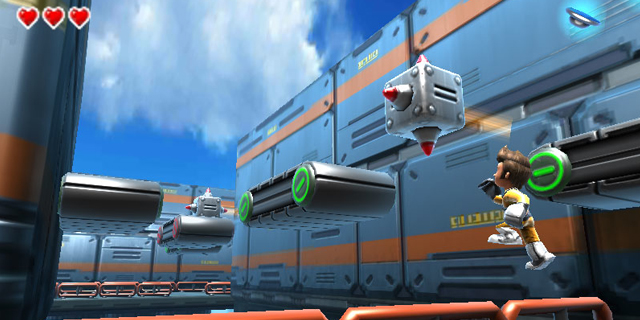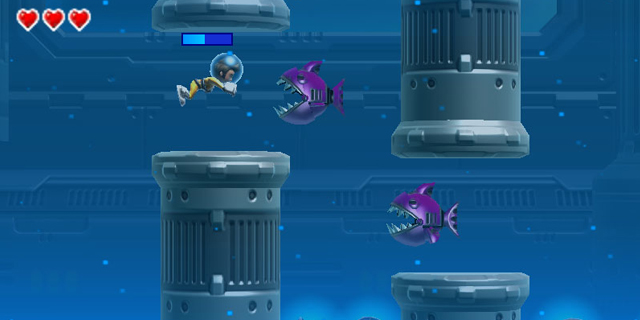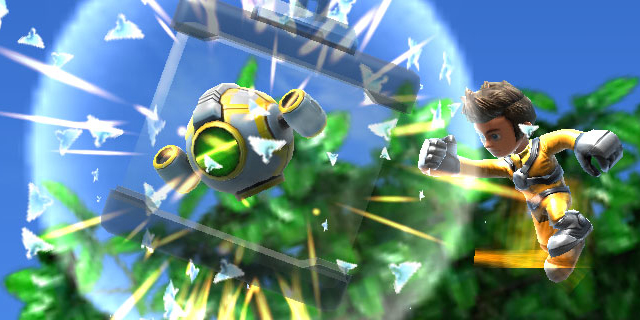
Digital distribution has opened up a far wider spectrum of games to be commercially released. In generations past, we could only ever see big-budget retail releases and freeware PC games on the other end of the spectrum, with little to fill the gap (other than, arguably, portable games). Jett Rocket II is a game that simply would not survive in a modern market under the old business model. It is a game with a very specific set of goals, meant to appeal to its own niche and do so with a reasonable price tag. Was developer Shin’en able to create a quality budget platformer for the still-burgeoning eShop?
If you said Jett Rocket II was a remake of a never-localized Famicom platformer, I would likely believe you. The game pays homage to the design sensibilities of platformers of the past, and proudly flaunts its faux-Japanese flair. The simplistic (yet thoughtful) level design makes good use of the limited tools available to craft each of the three level types. None of the level designs do anything particularly novel or unexpected in comparison to other platformers, but the designs represent a very accurate cross-section of the genre’s appeal and defining characteristics. This is platforming comfort food in its purest form.

There are three types of levels in Jett Rocket II, each representing a different dimension of platformer: 2D, 2.5D, and 3D. I found the 2.5D levels to be the weakest of the three, as the camera angle often obscured important areas in the foreground. Adopting a scaled-out camera that spans an entire navigable area on a horizontal section (except for vertical-climb areas) would have been preferable, although at the expense of some of the depth in the 3D effect. The 3D levels actually more so resemble a more linear take on Ratchet & Clank, with a clean, futuristic aesthetic. These levels often offer the most variety by allowing for some clever takes on progression and enemy placement, clearly setting it apart from the former two level types.
Normally, this kind of dimension mashup would feel inconsistent, since each category of platformer has different common means of engagement. 2D platformers are generally as test of reflexes and skill, 2.5D platformers often are slower-paced and puzzle-oriented and 3D platformers excel in exploration. Jett Rocket II ties everything together quite nicely by sticking to essentially the same design focus throughout all three level types.

Jett Rocket II‘s Famicom nostalgia is a charming design decision, and one that’s hard to put into words. It’s a Western-developed game pretending to be a Japanese-developed game pretending to be a Western-developed game. The cartoonish (yet not garishly colorful) character and background art seems to support this claim, as does the level design, which has a greater focus on platform placement and physical progression than enemy placement and arsenal variety. The main issue is that the levels don’t seem terribly varied, and most of the enemies are recycled often.
Jett Rocket II is fully aware of what it does best: rock-solid throwback platforming. It may not have the most exciting or even fun experiences of its niche, but for what it is, it is clearly successful. I’m all for pushing the medium forward and getting the most out of games, but there are far too many games today that try to be more than what they are in order to attract the broadest audience possible. In that sense, it’s quite refreshing to see a game that wants to do one thing, do it well, and do it with a modest price tag. If you want a good platformer for a just a few bucks, check this one out.
Pros: Solid design foundation, three level types, good value
Cons: Little variety in art direction, bland soundtrack



















